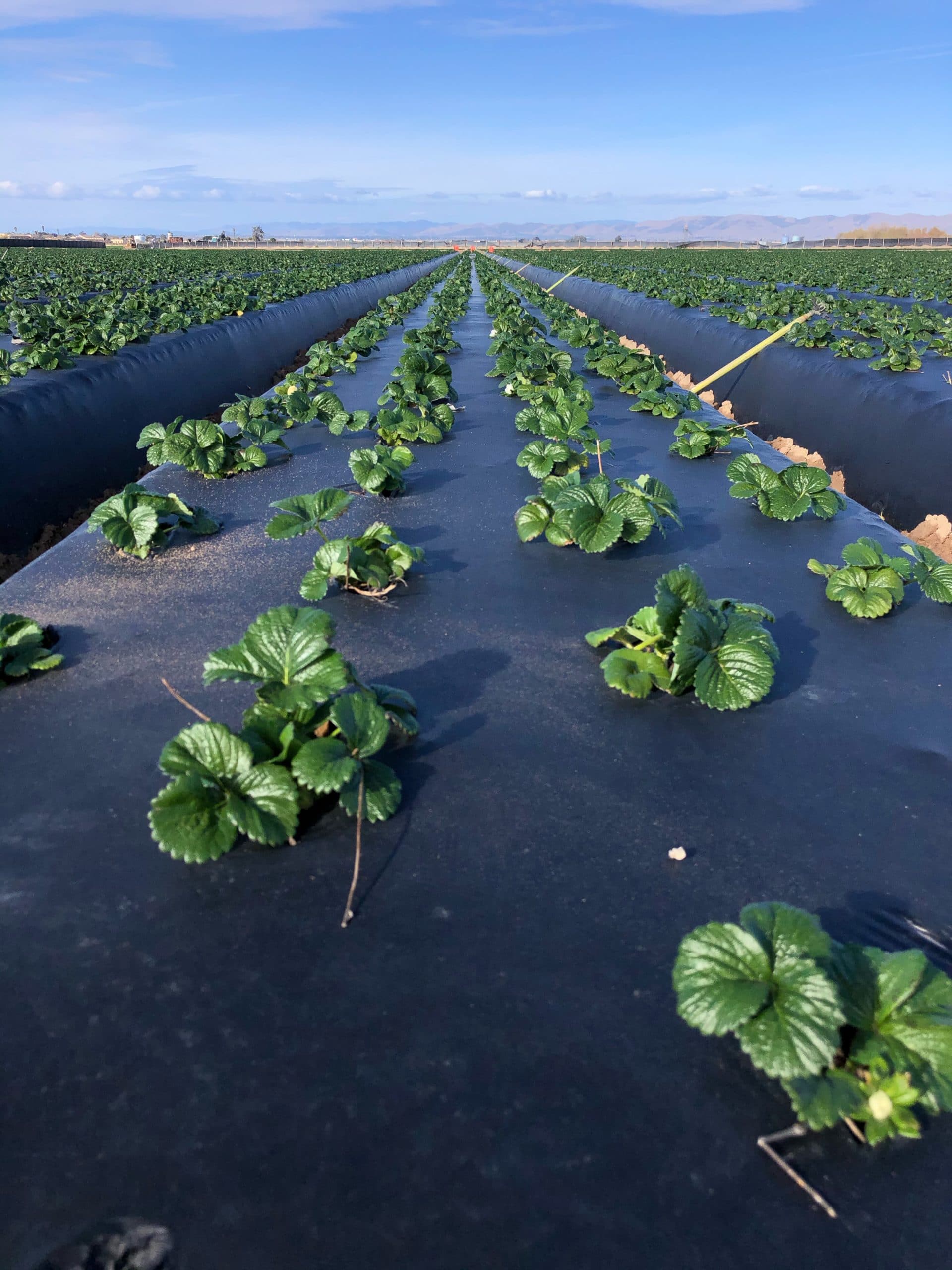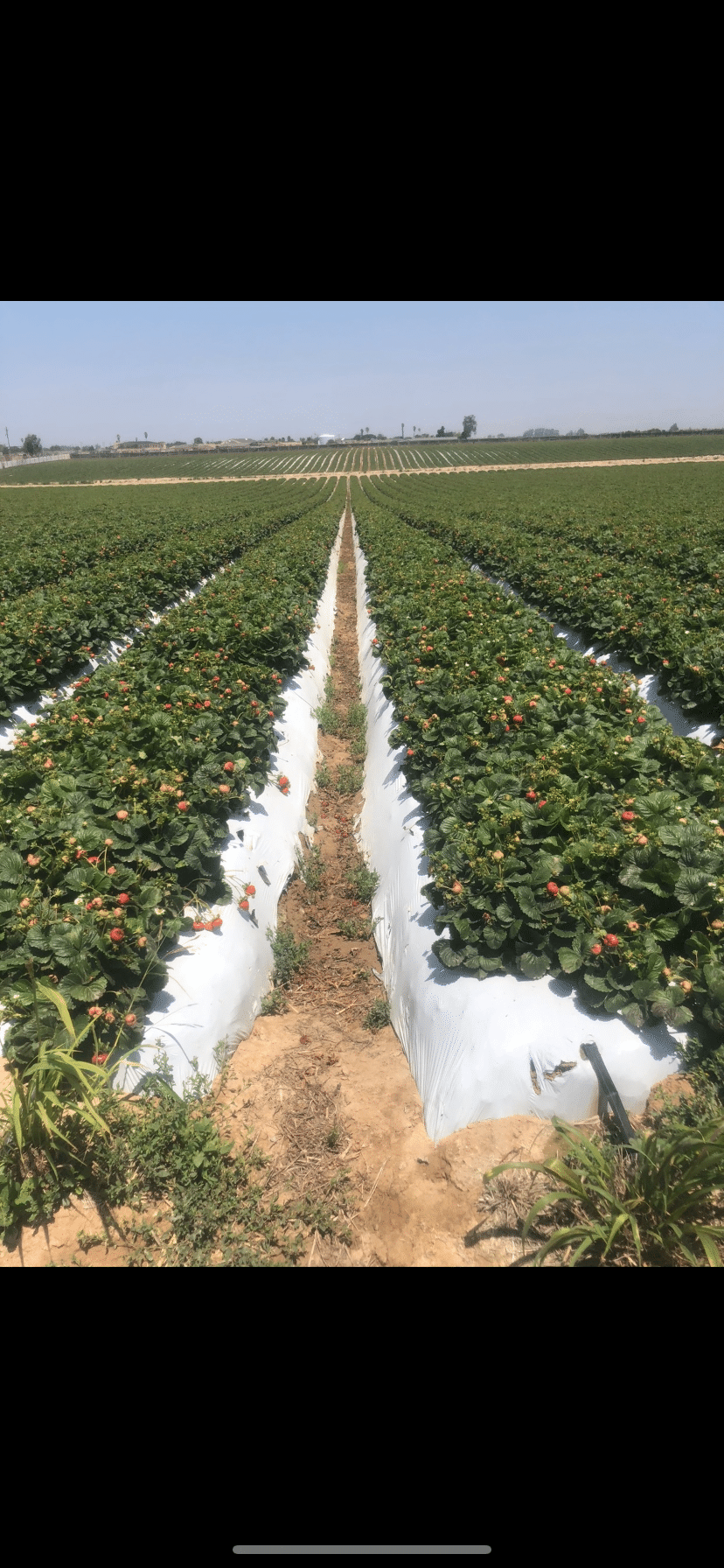From Orange County and San Diego, through Oxnard and Santa Maria, and all the way up to Watsonville; strawberries have been grown on the coast for as long as I can remember. For 2021 there is projected to be over 36,000 acres planted between the fall and summer seasons. This makes strawberries consistently one of the top 10 agriculture commodities grown in California.
Traditionally strawberries are grown on a raised shaped bed covered with a plastic mulch. Multiple lines of drip tape are installed under the mulch and provide the primary source for irrigation and fertigation. Depending on the growing region the size and bed shape can vary. The most common in Oxnard are beds with a 68” spacing, Santa Maria with a 64” spacing, and the Watsonville area varying between 48” and 52” spacings. With this also comes different cultural practices on the drip irrigation with drip tape lines per bed varying from 2 to 4. The first 4 to 7 weeks after planting growers will use hand move over head sprinklers or micro sprinklers to establish the new transplants. This also helps with the leaching of salts out of the root zone.



On most ranches the irrigation infrastructure is made of portable mainlines and submains consisting of a combination between layflat hose, PVC pipe, Certalok PVC pipe, and oval hose. Filtration varies on region but is typically done at the water source or at the block level with everything from automated screen filters and sand media tanks to manual screen and disc filters. Many growers are still using manual ball, butterfly, or gate valves for block regulation, but there has been a slow transition to hydraulic reducing valves.



Drip tape for strawberries is one of the most important purchases a grower can make as it provides essential water and nutrients to the crop. Most of all commercially grown strawberries utilize 5/8” diameter drip tape. This is based on the run lengths of the fields varying between 300’ – 450’ for harvesting purposes.
When it comes to flow rates they are often expressed in “low,” “medium,” and “high” flows. If you ask anyone on our team I am not a fan of this terminology as it has encouraged a lack of knowledge of the actual flowrates being used within the industry.
Below is a break-down of the actual flows when the above terminology is used. Flowrates are expressed in gallons per minute per 100’ or in gallons per hour per emitter.
Low Flow – Between 0.34 – 0.40 gallons per minute per 100’of drip tape (gpm/100’).
Medium Flow – 0.50 gallons per minute per 100’ of drip tape (gpm/100’)
High Flow – Between 0.65 – 0.67 gallons per minute per 100’ of drip (gpm/100’)
An example flowrate for strawberries in Watsonville is a double line high flow on 52” centers. This equates to approximately 135 gallons per minute per acre. If a grower has a 50 acre ranch with the above spec and a well producing 1,000 GPM they would be running the ranch in 7 irrigation sets. If the terminology used does not match the flowrate the grower is expecting this could change how the ranch is irrigated.


The irrigation practices for strawberries have evolved and we are installing more and more different types of systems each year. From adding simple valve and pump control to fertigation all the way to micro sprinklers for pest management and fully automated tabletop substrate systems. The one thing that will remain the same is that strawberries are amongst the top crops in California and the priority for the irrigation for them will continue to rise.






